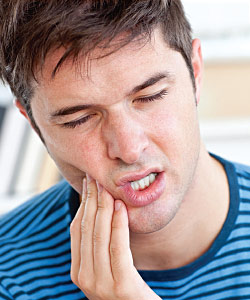Correct treatment begins with a correct diagnosis. Arriving at a correct diagnosis requires
1) Knowledge
2) Â Skill
3) Art
Clinical Diagnostic Methods:
Symptoms are defined as phenomena or signs of a departure from the normal and indicative of illness.
Subjective
Objective
Subjective Symptoms:
Subjective information is supplied by the written history or questionnaire that each patient completes and signs.
Further information is obtained by the clinician, who reviews the questionnaire and asks specific questions regarding the patient’s chief complaint, past medical history, past dental history, and current medical and dental status
The completed medical form concerning the patient’s past medical and dental history consists of subjective symptoms.
Generally, a chief complaint relates to pain, swelling, lack of function, or esthetics.

Pain:
The most common complaint that leads to dental treatment is pain.
One should ask the patients about the kind of pain, its location, its duration, what causes it, what alleviates it, and whether or not it has been referred to another site.
Pulpal pain is described by a patient in one of two ways; sharp, piercing, and lancinating; Associates with excitation of the “ A delta nerve fibers in the pulp,
or dull, boring, gnawing and excruciating; Excitation and slower rate of transmission of the “C†nerve fibers
Pain is localized when the patient can point to a specific tooth or site with assurance and speed when asked to do so. Sharp, piercing, lancinating pain in a tooth usually responds promptly to cold and is easy to localize. Symptoms from such teeth are rarely referred to other sites.
When the pain is diffuse, however, the patient describes an area of discomfort rather than specific site. When the patient is asked to point to the most painful spot, the patient’s finger moves along the dental arch or between the maxilla and the mandible
The duration of the pain is also diagnostic. At times, pulpal pain lasts only as long as an irritant is present. At another times, it lasts for minutes to hours.
This condition, acute reversible pulpitis (hyperemia), is characterized by pain of short duration, caused by a specific irritant, that disappears as soon as the irritant is removed.
Abnormal dental pain caused by heat usually requires endodontic treatment. Spontaneous pain and pain of long duration are symptoms of irreversible pulpitis
Objective Symptoms:
Objective symptoms are determined by tests and observations performed by the clinician. These tests are as follows
Visual and tactile inspection;
Percussion;
Palpation;
Mobility and depressibility
Radiograph
Electric pulp test
Thermal tests (hot and cold);
Anesthetic test;
Test cavity
Visual and tactile inspection:
A thorough visual, tactile examination of hard and soft tissue relies on checking the “three Cs’: Color, contour and consistency. In soft tissue, such as gingiva, deviation from the healthy, pink color is readily recognized when inflammation is present.
A normal-appearing crown has a lifelike translucency and sparkle that is missing in pulpless teeth.
Staining may be caused by old amalgam restorations, root canal filling materials and medicaments, or systemic medication, such as tetracycline staining.
Many discolorations, however, are the result of diseases commonly associated with necrotic, gangrenous pulps, internal or external resorption, and carious exposures
Percussion
This test enables one to evaluate the status of the periodontium surrounding a tooth. The tooth is struck a quick, moderate blow, initially with low intensity by the finger, then with increasing intensity by using the handle of an instrument
Palpation
Whether the tissue is fluctuant and enlarged sufficiently for incision and drainage;
The presence, intensity, and location of pain
The presence and location of adenopathy
Palpation, percussion, mobility and depressibility, test the integrity of the attachment apparatus, that is, periodontal ligament and bone, and are not diagnostic when the disease is confined within the pulp cavity of tooth
Mobility-Depressibility Testing
The mobility test is used to evaluate the integrity of the attachment apparatus surrounding the tooth. The test consists of moving a tooth laterally in its socket by using the fingers or, preferably, the handles of two instruments.
The objective of this test is to determine whether the tooth is firmly or loosely attached to its alveolus.
When depressibility exists, the chance for retaining the tooth ranges from poor to hopeless.
First degree mobility has a noticeable movement of the tooth in its socket;
Second – degree mobility has movement of a tooth within a ranges of 1 mm; and
Third-degree mobility has movement greater than 1 mm or when the tooth can be depressed.